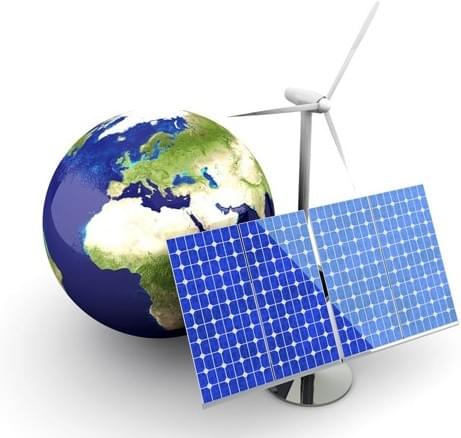The problem with the two most widely implemented types of renewable energy is that they are intermittent: a solar power system doesn’t work at night, and wind turbines don’t work if there’s no wind. To address these problems, you need to have a method of storing surplus energy in some sort of battery that can be discharged when the generating source is not available.

Other renewable sources, such as hydroelectric dams, geothermal energy or energy from biomass, rely on specific local resources, such as rivers, volcanic vents or readily available and cheap material for burning to create steam to spin a turbine or decomposition for gas production.
But what if you are trying to generate reliable and affordable electricity on an island in the middle of the ocean with few natural resources? What if you have no rivers, no volcanoes, insufficient biomass, and you are looking for a solution that produces electricity cheaper than wind/sun power and is always available?
There is one potential solution that could overcome at least some of the problems in finding an energy generation model that is clean, green, sustainable and cheap. Ocean Thermal Energy Conversion (OTEC), a technology conceptualised in the 1880s, has proven promising in laboratory conditions since the 1970s but is only recently proving itself as having large-scale commercial possibilities.Some of us are already familiar with a form of OTEC technology called Seawater Air Conditioning (SWAC), used by commercial developers and governments for district cooling and heating of buildings, offices, hotels and apartments. These systems extract deep, cold water from a nearby ocean or lake to produce air-conditioning using just 10% of the electricity used by traditional air conditioning systems.
Three things are needed in order to make a renewable energy OTEC system attractive – warm surface water, easy access to deep, cold water, and high energy costs due to importing diesel for electricity generation. On the face of it, OTEC is the ideal Caribbean renewable energy solution, where low-lying islands are surrounded by a coral reef and a deep drop-off to the ocean floor close to shore. They also have to import a lot of expensive diesel to run the generators for their electricity.
OTEC technology uses the temperature difference between the warm surface water and deep cold water to spin a turbine and produce electricity. It requires a minimum temperature differential of 17–20°C between the surface waters and those at a depth of 1km. This condition is met year-round in Caribbean waters.
In 2015 Hawaii became the first US state to produce commercial quantities of electricity using this method via a 105-kilowatt plant on Big Island. As of 2021, a 1-megawatt OTEC plant is nearing completion in the Pacific island nation of Kiribati, while a further 1-megawatt facility in Japan is on the drawing board.
The current development of OTEC renewable energy programs is mostly concentrated in the Far East and Pacific, with a half dozen operational and at least eight more proposed systems on the drawing board, most with a modest output. In the Caribbean, there are proposals for operating OTEC power plants in Barbados, the Bahamas, the US Virgin Islands and Martinique, some with an output capacity between 10 and 15 - megawatts.